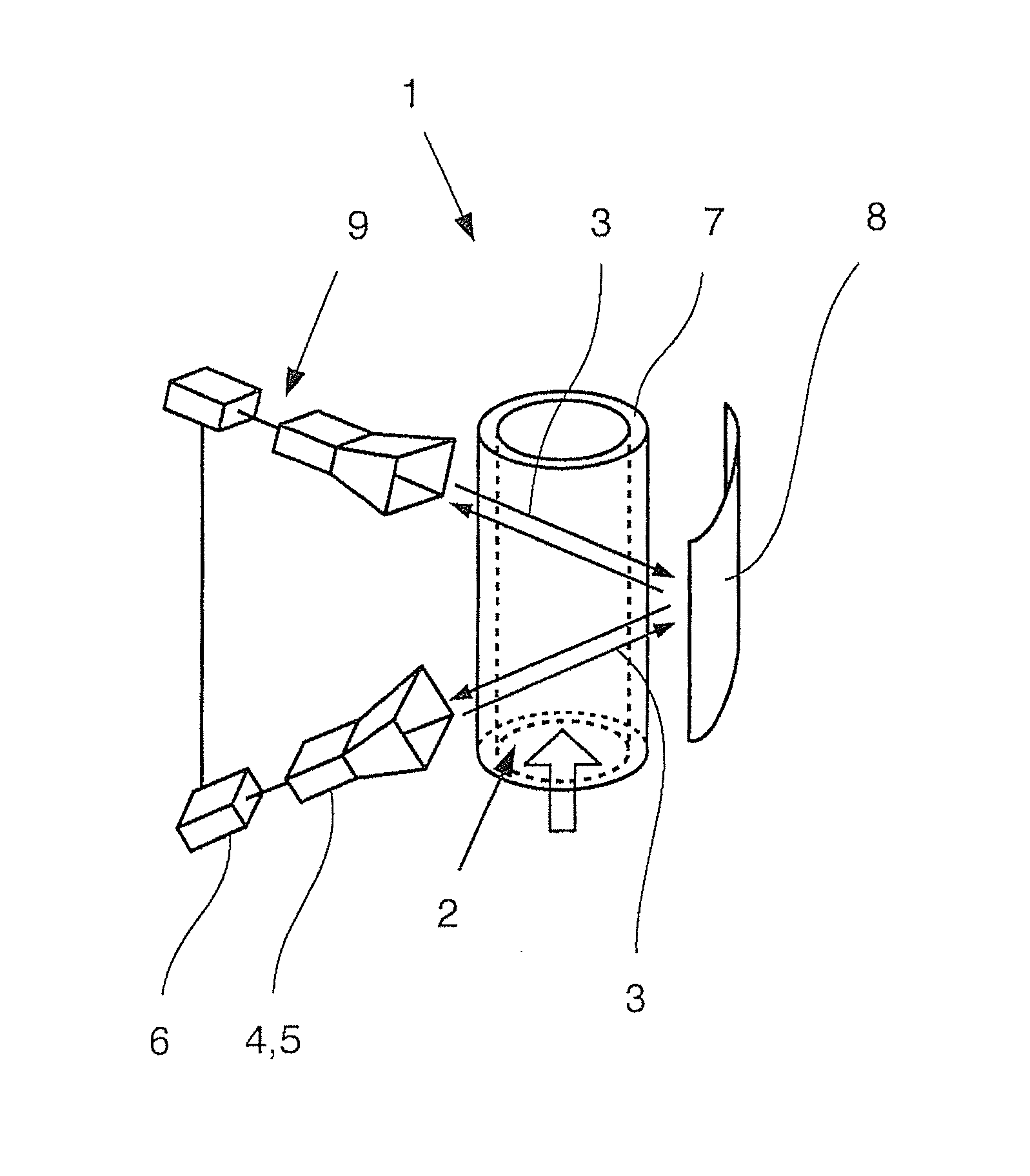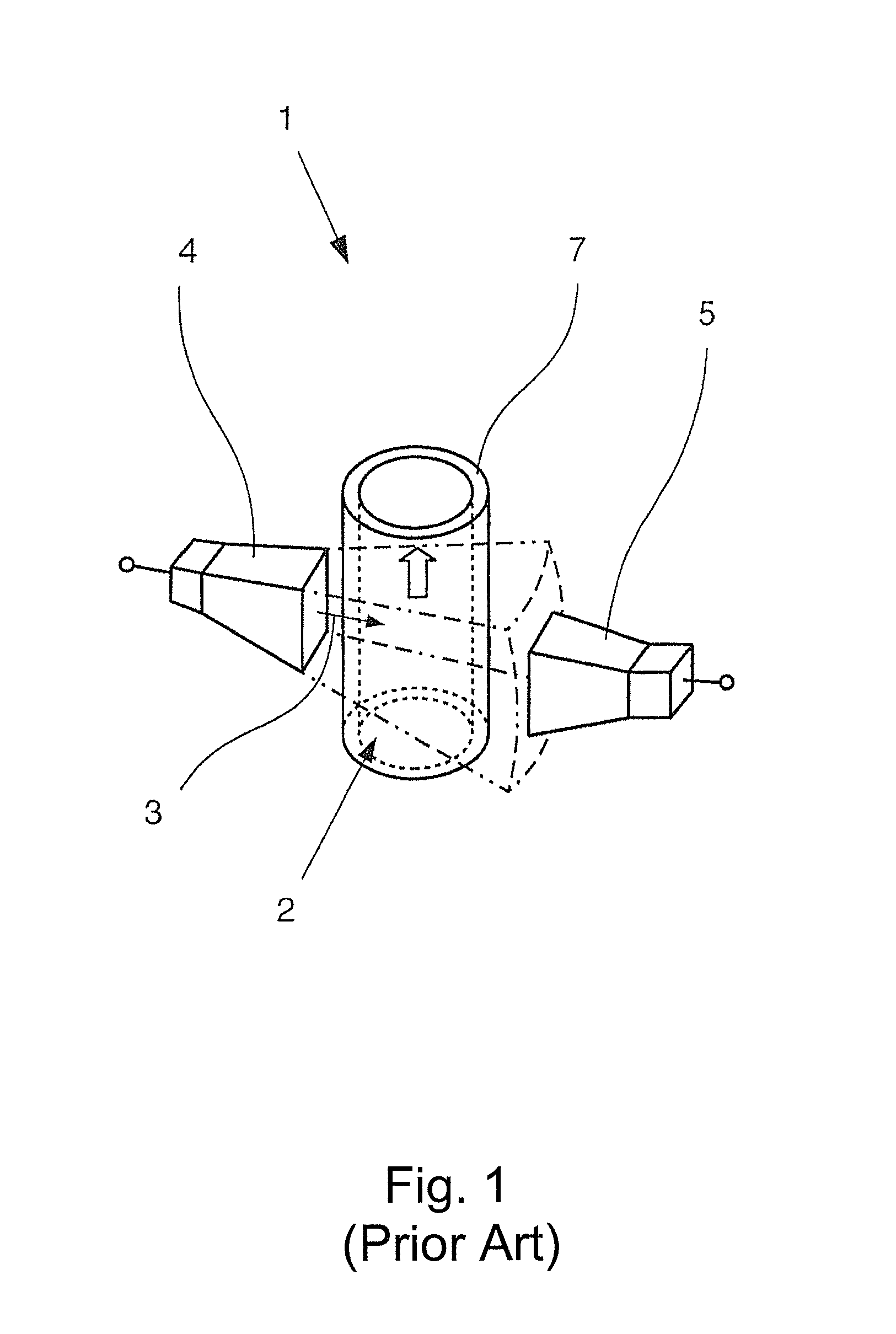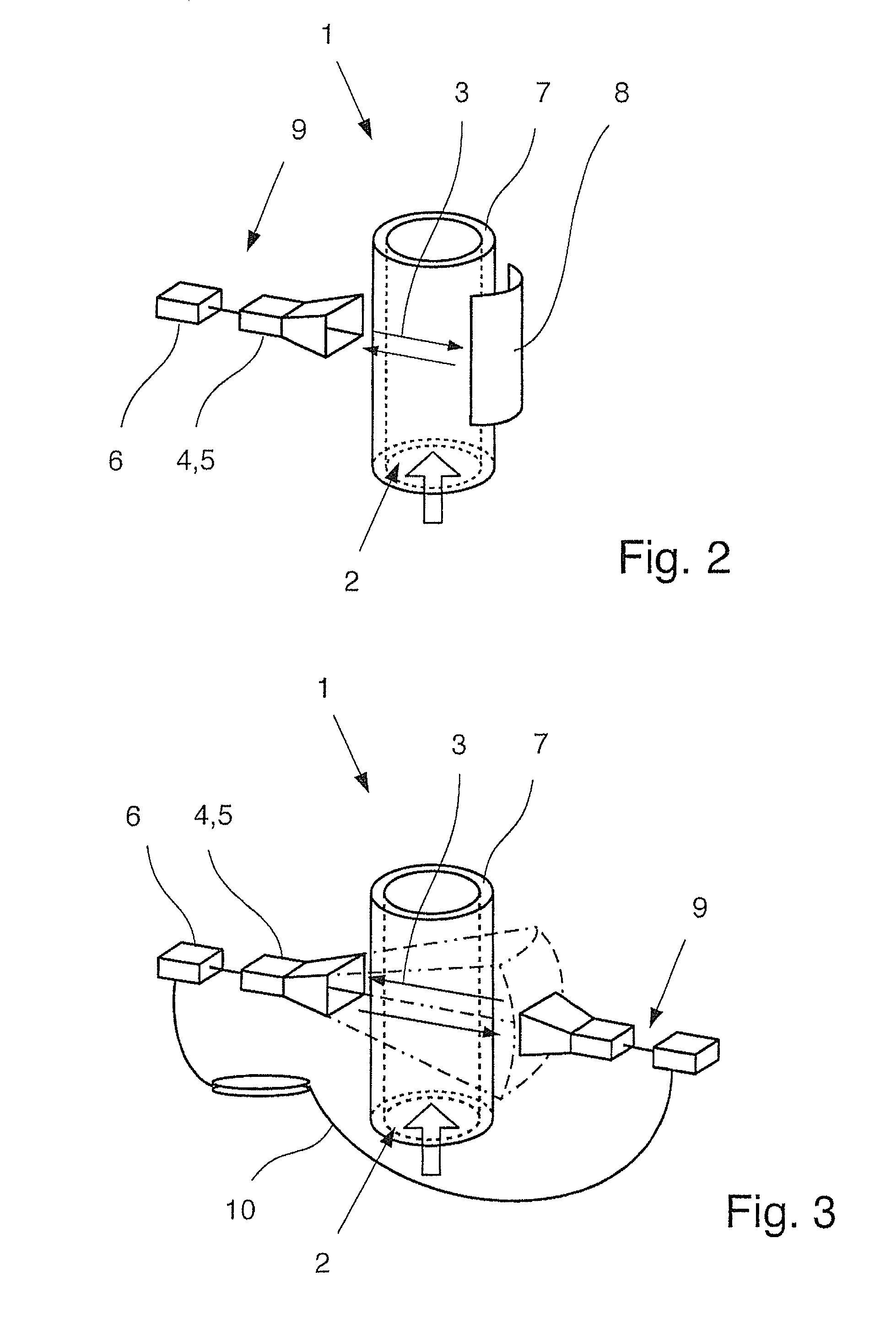Device for determining the volume fraction of at least one component of a multi-phase medium
a multi-phase medium and volume fraction technology, applied in measurement devices, material analysis using microwave means, instruments, etc., can solve the problems of complex equipment, high cost, and difficulty in recognizing the actual desired signal of interest with the received overall signal, and achieve low technical complexity and increase the effect of accuracy
- Summary
- Abstract
- Description
- Claims
- Application Information
AI Technical Summary
Benefits of technology
Problems solved by technology
Method used
Image
Examples
Embodiment Construction
[0034]A device 1 is shown in FIG. 1 for determining the volume fraction of at least one component of a multi-phase medium 2 on the basis of the running time of an electromagnetic desired signal 3 emitted in the multi-phase medium 2, having an emitting device 4 for emitting the desired signal 3 into the multi-phase medium 2, having a receiving device 5 for receiving the desired signal 3 and having an evaluating device, not shown here, and identified with the reference number 6 in other figures for determining the running time of the desired signal 3 between the emitting device 4 and the receiving device 5.
[0035]In the present case, the multi-phase medium 2 is lead in a tube 7, wherein the medium 2 moves in the direction given by the arrow. In the prior art, the desired signal 3 emitted by the emitting device 4 and the desired signal 3 received by the receiving device 5 are lead to a network analyzer via high frequency lines, from which conclusions can be drawn about the transmission ...
PUM
| Property | Measurement | Unit |
|---|---|---|
| volume fraction | aaaaa | aaaaa |
| running time | aaaaa | aaaaa |
| volume | aaaaa | aaaaa |
Abstract
Description
Claims
Application Information
 Login to View More
Login to View More - R&D
- Intellectual Property
- Life Sciences
- Materials
- Tech Scout
- Unparalleled Data Quality
- Higher Quality Content
- 60% Fewer Hallucinations
Browse by: Latest US Patents, China's latest patents, Technical Efficacy Thesaurus, Application Domain, Technology Topic, Popular Technical Reports.
© 2025 PatSnap. All rights reserved.Legal|Privacy policy|Modern Slavery Act Transparency Statement|Sitemap|About US| Contact US: help@patsnap.com



